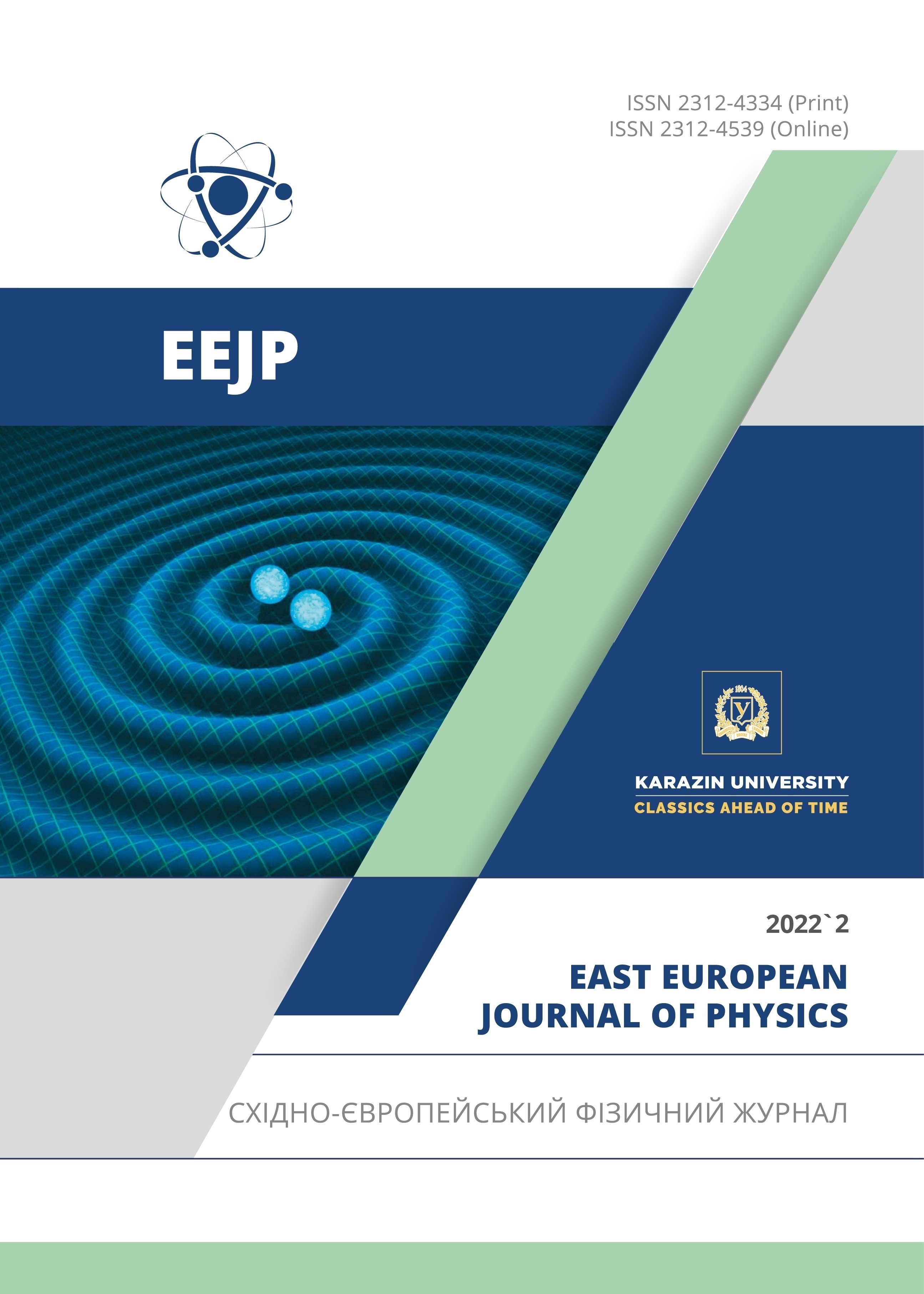The Features of Intense Electron Flow Impact on Metal Hydride Electrode
Abstract
The features of generation of a shielding plasma layer by a Zr50V50 metal hydride surface which prevents the sample from melting have been studied. The sample was interacting with an electron beam formed directly by the metal hydride. The electron beam was emitted from primary plasma generated by an additional discharge with a filament cathode and accelerated in the space charge layer at the front of the shielding plasma, which is formed on hydrogen desorbed from metal hydride or on the sample material in case of the depletion of stored hydrogen. Three different stages of the formation of shielding plasma layer have been identified depending on the ratio between the current to the metal hydride IMH and the current of the primary plasma source Id. When IMH/Id < 1 the classical conditions for charged particles transfer are realized. At IMH/Id > 1 the classical conditions for the transfer of charged particles are violated and double layer appears at the front of the shielding plasma, which ensures the efficient energy transfer from external electrical field to the energy of bipolar motion of charged particles.
Downloads
References
M.J. Sadowski, J. Baranowski, E. Skladnik-Sadowska, V.N. Borisko, O.V. Byrka, V.I. Tereshin, and A.V. Tsarenko, Characterization of pulsed plasma-ion streams emitted from RPI-type devices applied for material engineering, Applied Surface Science, 238, 433 (2004), https://doi.org/10.1016/j.apsusc.2004.05.167
V.N. Borisko, I.E. Garkusha, V.V. Chebotarev, M.V. Lototsky, J. Langner, M.J. Sadowski, V.I. Tereshin, and Yu.F. Shmal’ko, Influence of high-power plasma streams irradiation on surface erosion behavior of reversible hydrogen getters, J. Nucl. Mat. 313-316, 465 (2003), https://doi.org/10.1016/S0022-3115(02)01366-1
M.V. Lototskyy, I. Tolj, L. Pickering, C. Sita, F. Barbir, and V. Yartys, The use of metal hydrides in fuel cell applications, Progress in Natural Science, 27, 3 (2017), https://doi.org/10.1016/j.pnsc.2017.01.008
I.I. Okseniuk, V.O. Litvinov, D.I. Shevchenko, R.L. Vasilenko, S.I. Bogatyrenko, and V.V. Bobkov, Hydrogen interaction with Zr based getter alloys in high vacuum conditions: In situ SIMS-TPD studies, Vacuum, 197, 110861 (2022), https://doi.org/10.1016/j.vacuum.2021.110861
Z. Free, Z. Hernandez, M. Mashal, and K. Mondal, A Review on Advanced Manufacturing for Hydrogen Storage Applications. Energies, 14, 8513 (2021), https://doi.org/10.3390/en14248513
L.P. Block, A double layer review, Astrophysics and Space Science, 55, 59 (1978), http://dx.doi.org/10.1007/BF00642580
Copyright (c) 2022 Ihor Sereda, Yaroslav Hrechko, Ievgeniia Babenko, Mykola Azarenkov

This work is licensed under a Creative Commons Attribution 4.0 International License.
Authors who publish with this journal agree to the following terms:
- Authors retain copyright and grant the journal right of first publication with the work simultaneously licensed under a Creative Commons Attribution License that allows others to share the work with an acknowledgment of the work's authorship and initial publication in this journal.
- Authors are able to enter into separate, additional contractual arrangements for the non-exclusive distribution of the journal's published version of the work (e.g., post it to an institutional repository or publish it in a book), with an acknowledgment of its initial publication in this journal.
- Authors are permitted and encouraged to post their work online (e.g., in institutional repositories or on their website) prior to and during the submission process, as it can lead to productive exchanges, as well as earlier and greater citation of published work (See The Effect of Open Access).








